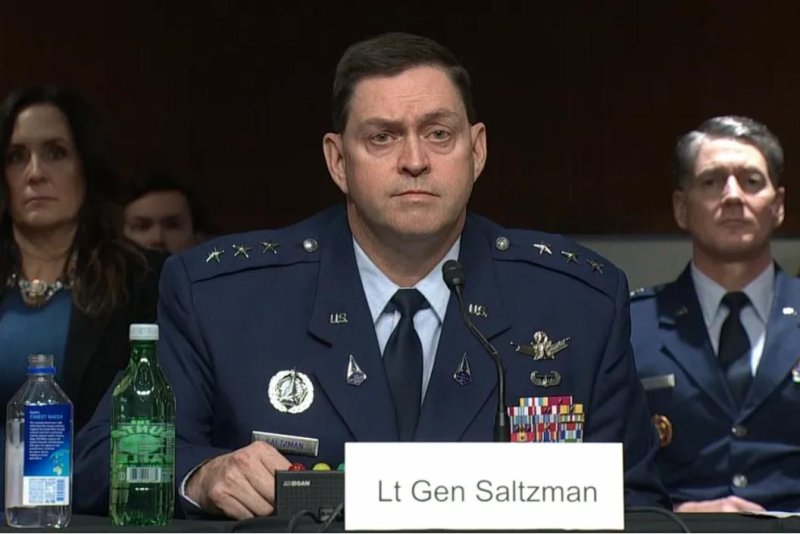U.S. Space Force Chief of Space Operations Gen. Chance Saltzman will testify before the Senate Armed Services subcommittee on Strategic Forces on Tuesday. Photo courtesy C-SPAN
March 14 (UPI) -- U.S. Space Force Chief of Space Operations Gen. Chance Saltzman testified before a Senate subcommittee on Tuesday, one day after the Space Force released its $30 billion budget.
Space Force's budget request for the 2024 fiscal year is 13 percent higher than last year, with $19 billion for funding the development of satellites, ground systems, and enabling technology.
Tuesday's hearing was an opportunity for Saltzman to pitch to the committee how he will train and equip the Space Force and utilize this expanded budget.
"In short, our mission forces, people and partnerships make the Space Force the most formidable space organization on the planet," Saltzman said. "China and Russia know this and are accelerating their efforts to undermine U.S. advantages in the domain."
Saltzman said he plans to counter the efforts of adversarial nations with a three-pronged approach. He said the three stages are "fielding combat-ready forces; amplifying the guardian spirit; and partnering to win."
Saltzman described "amplifying the guardian spirit" as a recruiting, workforce management and training.
Saltzman detailed some of the threats the Space Force faces in a heavily contested space. These threats come from space assets or are threats to space assets, he said. Threats to space assets include cyber warfare and attacks to satellites and their sensors.
"Threats from space present a growing danger to the force," he said. "Both China and Russia have robust space-based capabilities that allow them to find, target, and attack U.S. military forces on land, at sea, and in the air."
Saltzman says the military plans to develop "resilient satellite constellations," ground stations, and networks. He wants to bolster U.S. cyber security by building a better training infrastructure. One of the first such training exercises was the Black Skies exercise last September, he said. It tested Space Force electromagnetic warfare capabilities.
Air Force Secretary Frank Kendall, who oversees both services, told defense-technology news site C4ISR the funding gives the Space Force options as it considers how to make its satellites more resilient against threats in space.
"If we don't make those investments, we won't have the options even to consider doing those things," he said during a briefing before the budget release. "The entirety of what we're trying to do here to get to the next-generation capabilities is being driven mostly by the pacing challenge of the [People's Republic of China]."
The budget also includes $2.3 billion to fund the Resilient Missile Warning and Tracking program, that features satellites that track ballistic and hypersonic missiles.
The United States is far and away the world leader is spending on space programs, with 2022's budget totaling $61.97 billion, which was more than the rest of the world combined. NASA will get $27.2 billion for the 2024 fiscal year.
"The budget details a blueprint to grow the economy from the bottom up and middle out," NASA Administrator Bill Nelson said in a statement. "At NASA, we support good-paying American jobs, stir imaginations, and excite the world to gaze up at the heavens and reflect on our place in the universe."















